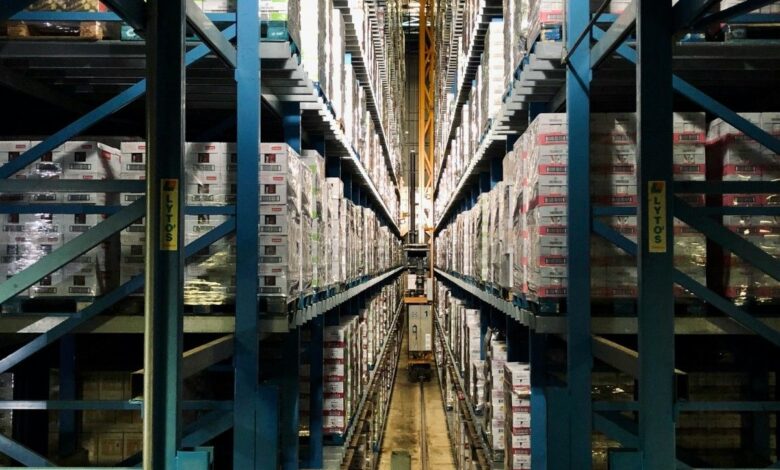
Supply chains used to hum along quietly – until a parade of Black-Swan-turned-routine events (container shortages, extreme weather, long and short port closures, geopolitical conflict, stubborn inflation) dragged them into prime time. Each new swan is a live-fire stress test, and resilience has become the buzzword of the moment. What organisations want now is not a silver bullet but a durable operating model- one that, like Mr Smith in the Matrix, sees risk coming and dodges before impact.
Naturally, technology, and, more recently, AI, have been widely hailed as part of the answer. But while many companies are experimenting, the reality hasn’t quite caught up.
Across global distribution networks, supply chain visibility and process automation significantly varies. In Europe, adoption is rising but the ability to implement predictive technologies strategically lags. Meanwhile, in North America, 14% of distributors are still relying on spreadsheets for planning and Latin America shows a 55.6% gap in process productivity performance compared to the global average of 34.3%.
Despite 81% of distribution leaders agreeing tech adoption is crucial to success and 50% of supply chain leaders testing Gen AI, progress isn’t happening fast enough.
Why AI Falls Short
Right now, plenty of companies are investing in AI to improve their supply chains, hoping to automate, streamline, and gain control. But too often, it ends up getting plugged into legacy workflows, launched without clear goals, or trialled as a one-off project with no real path to scale. The result? Some teams get flashy dashboards, others see minimal change, and the return on investment is underwhelming.
The problem is that organisations are falling into the trap of seeing AI purely as a tool for speeding things up or making existing processes more efficient. And while it can certainly do that, it’s capable of much more.
The real gap between potential and impact often shows up in the day-to-day. A distributor might deploy AI-driven forecasts yet still rely on outdated inventory systems. Or they might collect detailed machine data for predictive maintenance, but never act on it. The data’s there. The tech is in place. But the connection between insight and action is still missing.
When done right, AI can fundamentally reshape how supply chains operate. That’s where the line is drawn between digital improvement and true resilience.
AI That Actually Works
AI starts to prove its worth when it’s embedded intelligently. Like for inventory management. With AI, companies can go beyond simple reorder points by modelling supplier reliability, fluctuating demand, shipping times and lead time variability – all in real time. That means fewer shortages, less waste, and more confidence in what’s coming next. Similarly, predictive maintenance tools can flag equipment at risk of failure, helping businesses avoid unplanned downtime.
These aren’t hypothetical gains. Molex, a global electronics manufacturer, used AI-driven insights to detect and mitigate real-time disruptions like material shortages and port congestion. This resulted in improved continuity for their automotive customers and a stronger, more flexible global operation.
Visibility First, Then Intelligence
But smart AI relies on smart foundations. That’s where tools like process mining come in.
Process mining helps businesses map out how work actually happens, from sourcing all the way through to delivery. It uses data from existing systems to highlight where delays are occurring, where manual steps are adding friction, and where processes aren’t working as expected. This kind of clarity is essential when introducing AI. If you don’t understand your current process, you can’t improve it. And if you try to layer AI on top of broken workflows, all you get is faster dysfunction.
Combined with IoT for real-time tracking and AI for optimisation, process mining allows companies to visualise and simulate different operational scenarios. For example, what happens if demand spikes in a certain region? What’s the impact of a delayed shipment? Together, these tools create a feedback loop that help make supply chains even more responsive.
Building for What Comes Next
Resilience is often framed as the ability to bounce back. But in today’s world, what businesses often need is to anticipate and adapt before any impact hits.
AI enables that. It could mean rerouting shipments around a congested port before it becomes a bottleneck. Or spotting a supplier delay caused by raw material shortages and automatically switching to an approved alternate supplier to keep production on track. It could mean building circularity into your operations, where returned goods can be tracked, triaged, and reintroduced into the supply chain without adding cost or complexity.
All of this will take planning. But it doesn’t have to take years.
The businesses seeing the strongest returns aren’t necessarily those that spend the most, instead it’s ones who focus on use cases that matter. They start with problems
that are well understood and work cross-functionally to solve them. They make sure the people using the technology are part of its development. These supply chain leaders who treat AI as a strategic capability, not a flashy add-on, are already compressing decision cycles from weeks to minutes. They’re proving that resilience isn’t the absence of shocks, but the capacity to profit from volatility.
We’re in an age where adaptability is one of the most important traits a business can have. And in supply chain terms, that means having the visibility to see disruption coming and the agility to adjust plans in minutes, not months AI can’t replace strategy, and it won’t fix structural issues overnight. But when used well, it can make supply chains smarter, more responsive, and better prepared for whatever comes next. Excel and intuition got the industry this far; algorithmic foresight will take it the rest of the way.
The question is no longer “Should we trust AI?” but “Can we trust a supply chain that runs without it?”





